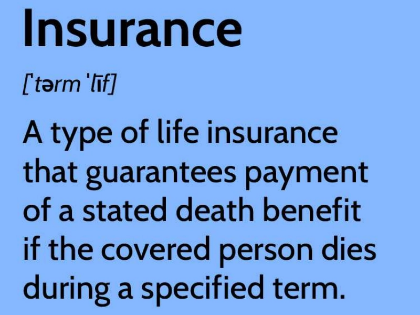Regulations and Adjustments in the Mortgage Industry Following the Financial Crisis
New regulations were implemented following the financial crisis to shield borrowers from dishonest or unethical mortgage lending practices. The government placed Freddie Mac and Fannie Mae under conservatorship, and these changes also had an impact on them. More than just following the rules, mortgage compliance calls for a dedication to justice and openness. This entails providing ongoing monitoring and training in addition to incorporating compliance checks into technological systems.
The Wall Street Reform and Consumer Protection Act, or Dodd-Frank

The Truth in Lending Act
 Lenders are required by the Truth in Lending Act (TILA) to provide crucial information regarding credit products, such as loans and mortgages, in an understandable manner. Customers can use this to compare loans and make well-informed judgments about them. Additionally, it guards against unfair actions such as hiding or falsifying loan terms and interest rates.
The official TILA commentary is updated by the CFPB's Regulation Z, which also lays out new guidelines for assessments of higher-priced mortgage loans. Along with implementing some of the Dodd-Frank Act's modifications, the regulation also updates servicing standards and adds protections for prefabricated homes. The rule covers smaller servicers; forbearances against guiding or endorsing a specific loan in exchange for payment; and more guidelines for qualifying mortgages, repayment capacity, and foreclosure avoidance.
It also makes various technical changes and incorporates the yearly revisions to the asset-size levels that exempt creditors from the HPML escrow account requirement. The current version is live as of April 1, 2012. Visit http://www.consumerfinance.gov/comments/truthinlending to access the official commentary.
Lenders are required by the Truth in Lending Act (TILA) to provide crucial information regarding credit products, such as loans and mortgages, in an understandable manner. Customers can use this to compare loans and make well-informed judgments about them. Additionally, it guards against unfair actions such as hiding or falsifying loan terms and interest rates.
The official TILA commentary is updated by the CFPB's Regulation Z, which also lays out new guidelines for assessments of higher-priced mortgage loans. Along with implementing some of the Dodd-Frank Act's modifications, the regulation also updates servicing standards and adds protections for prefabricated homes. The rule covers smaller servicers; forbearances against guiding or endorsing a specific loan in exchange for payment; and more guidelines for qualifying mortgages, repayment capacity, and foreclosure avoidance.
It also makes various technical changes and incorporates the yearly revisions to the asset-size levels that exempt creditors from the HPML escrow account requirement. The current version is live as of April 1, 2012. Visit http://www.consumerfinance.gov/comments/truthinlending to access the official commentary.
The Real Estate Settlement Procedures Act
 The RESPA law mandates that home loan servicers, lenders, and mortgage brokers disclose to buyers all fees associated with real estate transactions. This covers any business ties between parties involved in the closing process, the cost of settlement services, and any applicable consumer protection regulations.
In addition, RESPA controls escrow accounts and outlaws kickback fees. This makes it possible for borrowers to compare prices and makes sure they are fully aware of all expenses related to the mortgage loan procedure.
In addition, the act forbids discrimination on the grounds of age, handicap, national origin, race, religion, sex, and use of public assistance. You can report discrimination against these criteria to the U.S. Department of Housing and Urban Development or the Consumer Financial Protection Bureau (CFPB). While there are numerous approaches to compliance, being up-to-date on the most recent rules is essential. The Baker Tilly staff is prepared to assist you in navigating these adjustments.
The RESPA law mandates that home loan servicers, lenders, and mortgage brokers disclose to buyers all fees associated with real estate transactions. This covers any business ties between parties involved in the closing process, the cost of settlement services, and any applicable consumer protection regulations.
In addition, RESPA controls escrow accounts and outlaws kickback fees. This makes it possible for borrowers to compare prices and makes sure they are fully aware of all expenses related to the mortgage loan procedure.
In addition, the act forbids discrimination on the grounds of age, handicap, national origin, race, religion, sex, and use of public assistance. You can report discrimination against these criteria to the U.S. Department of Housing and Urban Development or the Consumer Financial Protection Bureau (CFPB). While there are numerous approaches to compliance, being up-to-date on the most recent rules is essential. The Baker Tilly staff is prepared to assist you in navigating these adjustments.
Section Z
 The Truth in Lending Act, or Regulation Z, requires lenders to disclose significant loan terms in order to safeguard borrowers. It encompasses a broad spectrum of credit instruments, such as credit cards, installment loans, reverse mortgages, home equity lines of credit, and mortgages. According to the law, borrowers must be given two sets of disclosures. First, a three-page document outlining the interest rate and overall cost of the loan; and second, a closing disclosure or statement outlining all remaining expenses and obligations.
Additionally, it forbids conflicts of interest by capping the amount of money that can be obtained for particular kinds of loans. For instance, a mortgage lender cannot pay a mortgage broker for directing you toward a mortgage product that does not fit your needs and budget.
Anyone working in the mortgage industry needs to be up-to-date on industry laws. Mortgage firms may help guarantee that they stay compliant and avoid expensive penalties by including compliance checks into their regular operations.
The Truth in Lending Act, or Regulation Z, requires lenders to disclose significant loan terms in order to safeguard borrowers. It encompasses a broad spectrum of credit instruments, such as credit cards, installment loans, reverse mortgages, home equity lines of credit, and mortgages. According to the law, borrowers must be given two sets of disclosures. First, a three-page document outlining the interest rate and overall cost of the loan; and second, a closing disclosure or statement outlining all remaining expenses and obligations.
Additionally, it forbids conflicts of interest by capping the amount of money that can be obtained for particular kinds of loans. For instance, a mortgage lender cannot pay a mortgage broker for directing you toward a mortgage product that does not fit your needs and budget.
Anyone working in the mortgage industry needs to be up-to-date on industry laws. Mortgage firms may help guarantee that they stay compliant and avoid expensive penalties by including compliance checks into their regular operations.








